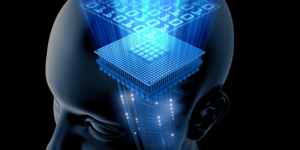 IBM will pour $3 billion into computing and chip materials research over the next five years, as it rethinks computer design and looks to a future that may not involve silicon chips.
IBM will pour $3 billion into computing and chip materials research over the next five years, as it rethinks computer design and looks to a future that may not involve silicon chips.
The computer design initiative could pave the way for functional quantum and cognitive computers that mimic brain functionality.
“The basic architecture of the computer has remained unchanged since the 1940s. We feel, given the kinds of problems we see today, [that] this is the time to start looking for new forms of computing,” said Supratik Guha, Director, Physical Sciences, IBM Research.
Silicon design has stalled and the ability to shrink chips is reaching its limit. IBM is looking at graphene, carbon nanotubes and other materials to replace silicon in computers, and will try to develop chips that can be scaled down to the atomic level.
The announcement comes a month after Hewlett-Packard disclosed that it is rethinking the basic design of computers.
IBM’s goal is to provide the building blocks for systems that can intelligently process vast amounts of data while consuming less power, said Tom Rosamilia, Senior Vice President, Systems and Technology Group, IBM.
Such computers could benefit areas such as cancer research, weather modelling and providing more intelligent services over the cloud. Accelerators like graphics processors are improving computer performance in the short term, but shrinking silicon-based processors to boost performance and reduce power is becoming more complex, Rosamilia said.
“We have in other points of history had to make leaps from one technology to another,” Rosamilia said. “If we don’t start inventing them now, we believe nobody will get there.”
IBM is already making quantum computers and brain-like computers, which have been theorised for decades, but have proven difficult to create. Those computers are based on different architectures than those used today, which leads to questions about whether one new type of architecture ought to be preferred over another, Rosamilia said.
IBM could mix and match individual technologies to provide the building blocks for new computer systems, Rosamilia said.
“Some combination will be coming true, and we will be riding those technologies for many years,” Rosamilia said. “You have to plan many years in advance for it. We’re very serious about this.”
The first fruits of the research will likely manifest in high-performance computers, but may eventually come to laptops and desktops, although Rosamilia couldn’t provide a time frame for that.
The investment comes as Moore’s Law runs its course. Intel co-founder Gordon Moore posited that the number of transistors on an integrated circuit would double every two years and while that has held steady, it is expected to be outdated within the next decade. Engineers are rethinking chip design to increase performance, especially as chips go into smaller geometries. Intel is preparing to ship PC chips made using the 14-nanometer process and has plans to move to the 10-nanometer process in the coming years.
Chip making was revolutionised when scientists purified silicon in 1950, but it will be harder to etch more features on chips when the 7-nanometer process and beyond, as the industry moves toward the atomic level, Guha said.
“What will replace it at this point is unclear,” Guha said.
Carbon nanotubes, which are cylinders made of carbon atoms, show the most promise as a silicon replacement. IBM researchers are shrinking the size of carbon nanotubes, but challenges remain in cooling them down and there is considerable debate around safety concerns. However, there is consensus that technical problems could be solved, Guha said.
Brain and quantum computers also involve research on computer behaviour.
IBM is developing computers that mimic brain-like functionality as part of its Synapse program. The computer makes an approximation of how the brain processes information in parallel via trillions of connections, which are the synapses. IBM in 2011 demonstrated a neural chip with programmable and learning synapses that have navigation and pattern recognition abilities. IBM’s goal is to build a neural chip that mimics the human brain, with 10 billion neurons and 100 trillion synapses but that uses just 1 kilowatt of power.
At the heart of quantum computers are quantum bits (qubits), which hold values of 1 and 0, which are unlike bits in conventional computers that are at a state of 1 or 0 at any given time. By storing and sharing data in more states, the qubits could speed up calculations.
Many issues still have to be resolved, including quantum noise, in which qubits are sent into undesirable states, making it difficult to execute programs normally. The only known quantum computer is sold by D-Wave Systems, but IBM’s researchers earlier this year questioned the computer’s relation to quantum mechanics, which looks at interaction and behaviour of matter on atomic and subatomic levels.





